Ditapis dengan
E-book A Samaritan State Revisited : Historical Perspectives on Canadian Fore…
Over the past two decades, Canadian international history has slipped its traditional North Atlantic moorings. Studies of Canada’s postwar relation-ships with a waning United Kingdom or an ascendant United States have faded in popularity, replaced with a stream of publications on relations with the decolonized states of Asia, Africa, and the Caribbean, countries whose citizens increasingly co…
- Edisi
- -
- ISBN/ISSN
- 9781773850405
- Deskripsi Fisik
- 393 hlm
- Judul Seri
- -
- No. Panggil
- 327.111 BLA a
E-book Fires in GunaiKurnai Country Landscape Fires and their Impacts on Abo…
Wildfires, often called ‘bushfires’ in Australia, are an annual occurrence in Australia, especially in the southeast. Each year they burn thousands of square kilometres of bushland, blazing everything in their way. Some of the physical infrastructure erected or grown by people, such as fencelines, buildings and crops can be rebuilt and replanted, despite the deva…
- Edisi
- -
- ISBN/ISSN
- 9781803274829
- Deskripsi Fisik
- 234 hlm
- Judul Seri
- -
- No. Panggil
- 628 DAV f
E-book From Mummers to Madness : A Social History of Popular Music in England…
The importance of music is difficult to overstate. As historian R W Malcolmson noted, it was the most accessible and democratic of the creative arts, with the ability to give expression to a range of fundamental emotions.4 From a different perspective, musicologist, Philip Tagg emphasised how music and dance are ‘particularly suited to expressing the affec…
- Edisi
- -
- ISBN/ISSN
- 9781862181939
- Deskripsi Fisik
- 452 hlm
- Judul Seri
- -
- No. Panggil
- 780.72 TAY f
E-book The Psychosocial Reality of Digital Travel : Being in Virtual Places
When physical travel to a specific place is prohibited or other-wise difficult or impossible, digital travel provides a promising alternative.The technology to do this is now widely available and many people havethe possibility to meet with others digitally, and thus alleviate the socialeffects of physical isolation. Digital travel can also be source of pleasureand entertainment, and many peopl…
- Edisi
- -
- ISBN/ISSN
- 9783030912727
- Deskripsi Fisik
- 160 hlm
- Judul Seri
- -
- No. Panggil
- 006.37 TJO t
E-book Marine Bioprospecting, Biodiversity and Novel Uses of Ocean Resources …
Recent decades have seen great advances in science and technology that enable us – or, rather, those who have the requisite financial and technological resources – to explore and derive ever more benefits from the marine realm. In some ways, technological developments risk making legal frameworks obso-lete, addressing problems that are no longer pertinent or facilitating …
- Edisi
- -
- ISBN/ISSN
- 9781509968299
- Deskripsi Fisik
- 253 hlm
- Judul Seri
- -
- No. Panggil
- 341.4 KRA m
E-book Ecology of Angola : Terrestrial Biomes and Ecoregions
Southwards from the Maiombe, and running from Cabinda to the Cunene, is the Angolan Escarpment. This major topographic buttress between the coastal lowlands, the Marginal Mountain Chain and the interior high plateau—the planalto—is of special ecological importance. Providing a steep gradient of landscapes and habitats between the arid coast and …
- Edisi
- -
- ISBN/ISSN
- 9783031189234
- Deskripsi Fisik
- 465 hlm
- Judul Seri
- -
- No. Panggil
- 577 HUN e
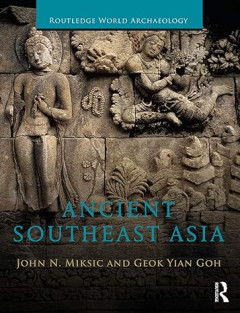
E-book Ancient Southeast Asia (Routledge World Archaeology)
Ancient Southeast Asia provides readers with a much needed synthesis of the latest discoveries and research in the archaeology of the region, presenting the evolution of complex societies in Southeast Asia from the protohistoric period, beginning around 500BC, to the arrival of British and Dutch colonists in 1600. Well-illustrated throughout, this comprehensive account explores the factors whic…
- Edisi
- -
- ISBN/ISSN
- 9780415735544
- Deskripsi Fisik
- 654 halaman, ilus.
- Judul Seri
- -
- No. Panggil
- 930.1 MIK a
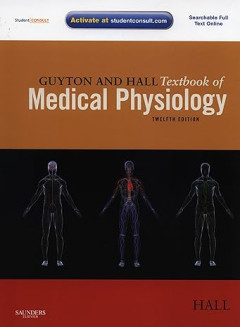
E-book Guyton and Hall Textbook of Medical Physiology, 12th Edition
The twelfth edition of Guyton and Hall Textbook of Medical Physiology continues this best-selling title's long tradition as one of the world's favorite physiology textbooks. The immense success of this book is due to its description of complex physiologic principles in language that is easy to read and understand. Now with an improved color art program, thorough updates reflecting today's medic…
- Edisi
- -
- ISBN/ISSN
- 9781416045748
- Deskripsi Fisik
- 1112 halaman, ilus.
- Judul Seri
- -
- No. Panggil
- 571 HAL g
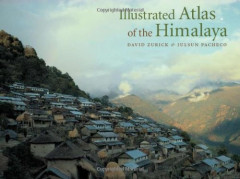
E-book Illustrated Atlas of the Himalaya
The Himalaya are world-renowned for their exquisite mountain scenery, ancient traditions, and diverse ethnic groups that tenaciously inhabit this harsh yet sublime landscape. Home to the world's highest peaks, including Mount Everest, and some of its deepest gorges, the region is a trove of biological and cultural diversity. Providing a panoramic overview of contemporary land and life in the Ea…
- Edisi
- -
- ISBN/ISSN
- 9780813123882
- Deskripsi Fisik
- 229 halaman, ilus.
- Judul Seri
- -
- No. Panggil
- 910 ZUR i
E-book The Declaration of Independence: A Global History
In a stunningly original look at the American Declaration of Independence, David Armitage reveals the document in a new light: through the eyes of the rest of the world. Not only did the Declaration announce the entry of the United States onto the world stage, it became the model for other countries to follow. Armitage examines the Declaration as a political, legal, and intellectual document…
- Edisi
- -
- ISBN/ISSN
- 9780674022829
- Deskripsi Fisik
- 308 halaman
- Judul Seri
- -
- No. Panggil
- 973.3 ARM t

E-book Rethinking the Andes–Amazonia Divide : A cross-disciplinary exploration
Maps in this book were reproduced by Paul Heggarty from maps provided by chapter authors, by converting them into a GIS (Geographic Information System) database, collated and enriched for South America for the purposes of this book. All data used on the maps are thus geo- referenced – set to actual latitude and longitude coordi-nates – as precisely as possible. Individual p…
- Edisi
- -
- ISBN/ISSN
- 9781787357358
- Deskripsi Fisik
- 421 hlm
- Judul Seri
- -
- No. Panggil
- 980 PEA r

E-book God Loves You: He Always Has--He Always Will
That God loves us is the most profound truth in the universe. Experiencing this love has the potential to answer every question, solve every problem, and satisfy the deepest yearnings of the heart. So why are many people who believe this still unable to fully utilize the power of God's love in their personal lives? In this probing book, Dr. David Jeremiah reveals that not fully understanding…
- Edisi
- -
- ISBN/ISSN
- 9780446565974
- Deskripsi Fisik
- 240 halaman
- Judul Seri
- -
- No. Panggil
- 230 JER g
E-book The Essential Rumi
- Edisi
- -
- ISBN/ISSN
- 978078580871X
- Deskripsi Fisik
- 318 halaman
- Judul Seri
- -
- No. Panggil
- 921 BAR t
- Edisi
- -
- ISBN/ISSN
- 978078580871X
- Deskripsi Fisik
- 318 halaman
- Judul Seri
- -
- No. Panggil
- 921 BAR t
E-book Animal Husbandry Regained The Place of Farm Animals in Sustainable Agr…
The farming of animals for meat and milk confronts a stark dilemma. While world demand from a growing and more affluent human population is increasing rapidly, there are strong counter-arguments that we should eat less meat and pay more attention to environmental protection, animal welfare and human health and well-being. The aim of this book is to identify and explain the causes and contr…
- Edisi
- -
- ISBN/ISSN
- 9781849714204
- Deskripsi Fisik
- 265 halaman, ilus.
- Judul Seri
- -
- No. Panggil
- 636 WEB a

E-book Bob Marley: A Biography (Greenwood Biographies)
Bob Marley was the first, and possibly the only, superstar to emerge from the Third World. Although he lived a short life, only 36 years, Bob penned an enormous quantity of songs, pioneering a new reggae rhythm and sound that was distinctly Jamaican. An expert lyricist who could more than hold his own with any contemporary hip-hop word slinger, Bob crafted emotionally powerful chains of words t…
- Edisi
- -
- ISBN/ISSN
- 9780313338793
- Deskripsi Fisik
- 149 halaman
- Judul Seri
- -
- No. Panggil
- 927.8 MOS b

E-book Boundaries: When to Say Yes, How to Say No to Take Control of Your Life
Having clear boundaries is essential to a healthy, balanced lifestyle. A boundary is a personal property line that marks those things for which we are responsible. In other words, boundaries define who we are and who we are not. Boundaries impact all areas of our lives: Physical boundaries help us determine who may touch us and under what circumstances -- Mental boundaries give us the freedom t…
- Edisi
- -
- ISBN/ISSN
- 9780310243750
- Deskripsi Fisik
- 357 halaman
- Judul Seri
- -
- No. Panggil
- 102 CLO b
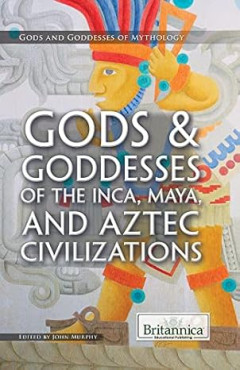
E-book Gods & Goddesses of the Inca, Maya, and Aztec Civilizations (Gods and …
Sharing many common beliefs, deities, and rituals, the religion of the Maya, Aztec, and Inca was rooted in both the earth and the sky, the rhythms of the seasons, and the movements of the sun, moon, and stars. Readers will meet rain and sun gods, corn gods and fertility gods, earth mothers who are both creators and destroyers, and even a feathered serpent. Lavish primary-source images of arts a…
- Edisi
- -
- ISBN/ISSN
- -
- Deskripsi Fisik
- 94 halaman, ilus.
- Judul Seri
- -
- No. Panggil
- 398.2 MUR g

E-book DK Essential Managers: Innovation
Think outside the box and get results with Essential Managers: Innovation. This book will give you all the tools you'll need to succeed.
- Edisi
- -
- ISBN/ISSN
- 9780756655556
- Deskripsi Fisik
- 74 halaman, ilus.
- Judul Seri
- -
- No. Panggil
- 060 BES d
E-book The Corporation as a Protagonist in Global History, c. 1550-1750
For almost two decades, historians and academics from a wide- range of sub- disciplinary backgrounds have been situating their research within a global context, crossing boundaries both geographically and methodologically, in such large numbers as to necessitate the emergence of a recognisably new field of enquiry: Global History. From comparative to connective histories, the …
- Edisi
- -
- ISBN/ISSN
- 9789004387850
- Deskripsi Fisik
- 343 hlm
- Judul Seri
- -
- No. Panggil
- 909.5 PET t
E-book Picturing Royal Charisma : Kings and Rulers in the Near East from 3000…
From the earliest Near Eastern urban civilizations to modern times, rulers and their retinues have disseminated ideological information with regard to the legitimacy of their status, their obligations, and their rights. The visual expressions of these royal statements were the subject of our research group, under the auspices of the Mandel Scholion In…
- Edisi
- -
- ISBN/ISSN
- 9781803271613
- Deskripsi Fisik
- 152 hlm
- Judul Seri
- -
- No. Panggil
- 930.1 DAV p
E-book Tracks from the Crypt
Is film a medium of communication? This is a basic question of film studies. It is about as old as the field itself, and the discursive frameworks and underlying assumptions that make the question relevant are about as old as the medium, or the art form, of cinema itself. As John Durham Peters argues, “only since the late nineteenth century have we defined ourselves in terms our ability to co…
- Edisi
- -
- ISBN/ISSN
- 9783957960030
- Deskripsi Fisik
- 52 hlm
- Judul Seri
- -
- No. Panggil
- 791.43 MOW t
E-book Here for the Hearing : Analyzing the Music in Musical Theater
Twenty years ago, very few music scholars examined Broadway musicals. If musicologists were a bit slow to approach the musical theater reper-toire (and they were), theorists and analysts arrived—and are only now arriving—more than fashionably late to the party. We hope that this vol-ume loudly announces that we are here.Music theorists care about musical theater. We kn…
- Edisi
- -
- ISBN/ISSN
- 9780472903535
- Deskripsi Fisik
- 311 hlm
- Judul Seri
- -
- No. Panggil
- 781.63 BLU h
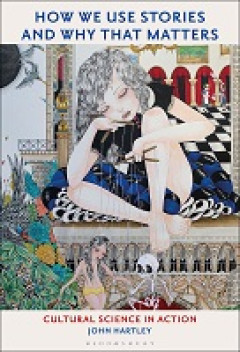
E-book How We Use Stories and Why That Matters: Cultural Science in Action
How We Use Stories and Why That Matters guides the reader through the tangled undergrowth of communication and cultural expression towards a new understanding of the role of group-mediating stories at global and digital scale. It argues that media and networked systems perform and bind group identities, creating bordered fictions within which economic and political activities are made meaningfu…
- Edisi
- -
- ISBN/ISSN
- 9781501351631
- Deskripsi Fisik
- 313 halaman
- Judul Seri
- -
- No. Panggil
- 306.1 HAR h
E-book The Material Theory of Induction
Our best science tells us wonderful things. The cold and dark skies of our universe were not so long ago in their entirety in a state of unimaginably high energy and temperature. The detritus that exploded from it congealed into stars, planets, and galaxies. These systems of celestial masses are in turn held together by a curvature of the geometry of space and time itself. On a most minute scal…
- Edisi
- -
- ISBN/ISSN
- 9781773852546
- Deskripsi Fisik
- 682 hlm
- Judul Seri
- -
- No. Panggil
- 161 NOR t
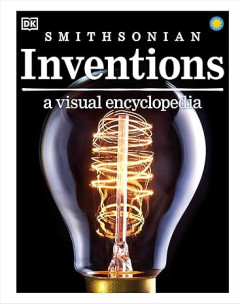
E-book Inventions: A Visual Encyclopedia
Discover the amazing inventions throughout history that have shaped the world as we know it. This stunning visual guide explores and explains the greatest inventions, ideas, and discoveries throughout the ages, and introduces their inventors. From fire, stone tools, and the wheel to ploughs and paper, discover the first inventions that shaped societies and grew mighty civilizations and empir…
- Edisi
- -
- ISBN/ISSN
- 9781465473691
- Deskripsi Fisik
- 306 halaman, ilus.
- Judul Seri
- -
- No. Panggil
- 608 FAR i
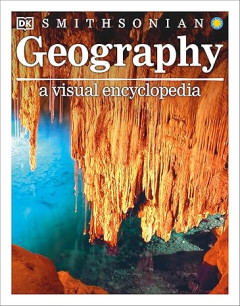
E-book Geography: A Visual Encyclopedia
Pack up your bags for a round the world trip! You’ll take in natural wonders far and wide as this spectacular visual encyclopedia leads the exciting exploration of Earth and beyond.?? From the tallest snowy peak of Mount Everest to the deep, dark waters of the Mariana Trench, you’ll see it all in stunning color images that bring the world to life. Feel the heat in the African desert,…
- Edisi
- -
- ISBN/ISSN
- 9781465412188
- Deskripsi Fisik
- 306 halaman, ilus.
- Judul Seri
- -
- No. Panggil
- 910.2 WOO g
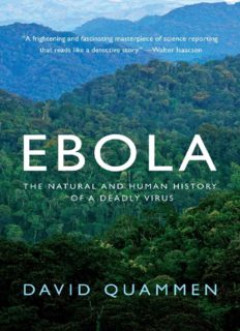
E-book Ebola: The Natural and Human History of a Deadly Virus
In 1976 a deadly virus emerged from the Congo forest. As swiftly as it came, it disappeared, leaving no trace. Over the four decades since, Ebola has emerged sporadically, each time to devastating effect. It can kill up to 90 percent of its victims. In between these outbreaks, it is untraceable, hiding deep in the jungle. The search is on to find Ebola's elusive host animal. And until we find i…
- Edisi
- -
- ISBN/ISSN
- -
- Deskripsi Fisik
- 108 halaman
- Judul Seri
- -
- No. Panggil
- 614.49 QUA e
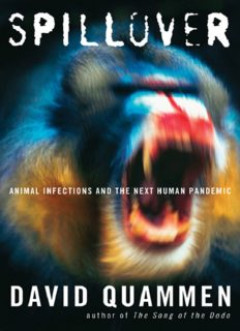
E-book Spillover: Animal Infections and the Next Human Pandemic
The emergence of strange new diseases is a frightening problem that seems to be getting worse. In this age of speedy travel, it threatens a worldwide pandemic. We hear news reports of Ebola, SARS, AIDS, and something called Hendra killing horses and people in Australia?but those reports miss the big truth that such phenomena are part of a single pattern. The bugs that transmit these diseases sh…
- Edisi
- -
- ISBN/ISSN
- 9780393066807
- Deskripsi Fisik
- 485 halaman
- Judul Seri
- -
- No. Panggil
- 571.9 QUA s

E-book Plagues in World History
Plagues in World History provides a concise, comparative world history of catastrophic infectious diseases, including plague, smallpox, tuberculosis, cholera, influenza, and AIDS. Geographically, these diseases have spread across the entire globe; temporally, they stretch from the sixth century to the present. John Aberth considers not only the varied impact that disease has had upon human hist…
- Edisi
- -
- ISBN/ISSN
- 9780742557055
- Deskripsi Fisik
- 257 halaman
- Judul Seri
- -
- No. Panggil
- 614.49 ABE p
E-book Resilience of Water Supply in Practice : Experiences from the Frontline
Uncertainty and interconnecting crises are no longer exceptional. In almost everypart of the world, living with water crises is an everyday reality for many. Yet,water supply sustains a functioning society, and as such any threat to it must becountered head-on. Frontline water suppliers, routinely forced to respond andadapt so they can deliver water in the face of all challenges, have found tha…
- Edisi
- -
- ISBN/ISSN
- 9781789061628
- Deskripsi Fisik
- 210 hlm
- Judul Seri
- -
- No. Panggil
- 363.61 MOR r
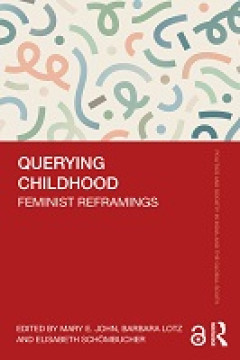
E-book Querying Childhood: Feminist Reframings
This book critically examines assumptions about age, women, and gender. Amidst all the attention that has been granted to difference and inequality, however uneven and unsatisfactory in terms of class and caste, race and ethnicity, sexuality and gender, disability, religion, and nation, questions of age and its importance for feminism have been less well defined. Drawing on recent literature on…
- Edisi
- -
- ISBN/ISSN
- 9781032679037
- Deskripsi Fisik
- 340 halaman
- Judul Seri
- -
- No. Panggil
- 306.85 JOH q
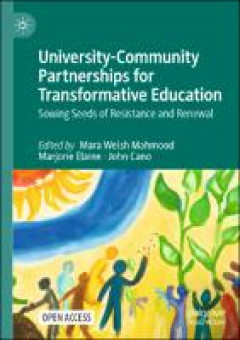
E-book University-Community Partnerships for Transformative Education: Sowing…
This open access edited volume reports on a unique network of innovative in-school and out-of-school programs, University-Community Links. UC Links connects university faculty and students with young people and their families in diverse communities around the world. Chapters in this volume describe programs in the United States (California) as well as Germany, Italy, Spain, Uganda, and Uruguay.…
- Edisi
- -
- ISBN/ISSN
- 9783031605833
- Deskripsi Fisik
- 418 halaman, ilus.
- Judul Seri
- -
- No. Panggil
- 378 MAH u
E-book The Element Encyclopedia of Secret Societies and Hidden History: The U…
Discover 10,000 years of the shadowy side of our world in this treasure trove of alternative history. The Encyclopedia of Secret Societies features detailed information about.
- Edisi
- -
- ISBN/ISSN
- -
- Deskripsi Fisik
- 550 halaman, ilus.
- Judul Seri
- -
- No. Panggil
- 903 GRE t
E-book An Illustrated History of Britain
This is an illustrated history of Britain from prehistoric times to the present day. The book analyzes the major political and military events in British history, and where appropriate, looks at these within a wider, international context. It also describes everyday life for men and women from different levels of society in different ages: the kind of work they did, family life, etc. Emphasis i…
- Edisi
- -
- ISBN/ISSN
- 9780582749146
- Deskripsi Fisik
- 194 halaman, ilus.
- Judul Seri
- -
- No. Panggil
- 941 MCD a

E-book Encyclopedia of Aquarium and Pond Fish
Complemented by more than 1,300 photographs and illustrations, a comprehensive reference for owners of freshwater and saltwater fish provides the latest information on keeping an aquarium or pond, highlighting more than eight hundred species of popular freshwater, saltwater, tropical, and cold water fish, along with information on feeding, breeding, and care. Reprint.
- Edisi
- -
- ISBN/ISSN
- 9781465480316
- Deskripsi Fisik
- 402 halaman, ilus.
- Judul Seri
- -
- No. Panggil
- 639.34 ALD e
E-book Death and the Pearl Maiden : Plague, Poetry, England
As recent discussions in medieval studies have demonstrated, however, the response of literature to history—the witness that literature provides within history—is never a straightforward one. It is, at this point, impossible to state flatly that texts such as the Decameron, Guillaume de Machaut’s Jugement dou Roy de Navarre, or William Langland’s Piers Plowman stand as “accu…
- Edisi
- -
- ISBN/ISSN
- 9780814213902
- Deskripsi Fisik
- 236 hlm
- Judul Seri
- -
- No. Panggil
- 801.9 COL d

E-book Perspectives on the "Collapse" of Angkor and the Khmer Empire (Chapter…
The Angkorian World explores the history of Southeast Asia’s largest ancient state from the first to mid-second millennium CE. Chapters by leading scholars combine evidence from archaeology, texts, and the natural sciences to introduce the Angkorian state, describe its structure, and explain its persistence over more than six centuries. Comprehensive and accessible, this book will be an indis…
- Edisi
- -
- ISBN/ISSN
- 9780815355953
- Deskripsi Fisik
- 14 halaman
- Judul Seri
- -
- No. Panggil
- 930.1 EVA p
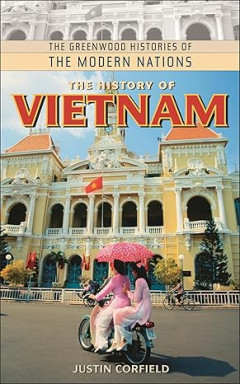
E-book The History of Vietnam (The Greenwood Histories of the Modern Nations)
Everyone knows Vietnam for its turbulent environment during the second half of the 20th century, but few know that archaeologists believe that civilization there existed as far back as the Bronze Age. Vietnam's history runs rampant with clashing dynasties, civil wars and power struggles between the North and South, and conflicts with neighboring and other countries. First ruled under China's cl…
- Edisi
- -
- ISBN/ISSN
- 9780313341939
- Deskripsi Fisik
- 183 halaman
- Judul Seri
- -
- No. Panggil
- 959.7 COR t
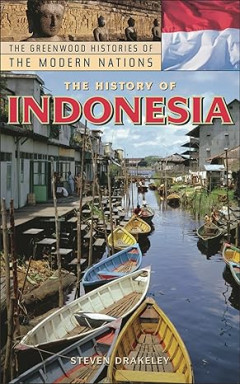
E-book The History of Indonesia (The Greenwood Histories of the Modern Nations)
Culturally and politically, Indonesia is one of the more complex countries in the world, with 336 ethnic groups speaking 583 languages and dialects. It is only recently that these people have been contained within one political framework. Throughout most of history, Indonesia's inhabitants were divided politically in many different ways as a bewildering array of kingdoms and empires rose and fe…
- Edisi
- -
- ISBN/ISSN
- 9780313331146
- Deskripsi Fisik
- 228 halaman
- Judul Seri
- -
- No. Panggil
- 959.8 DRA t
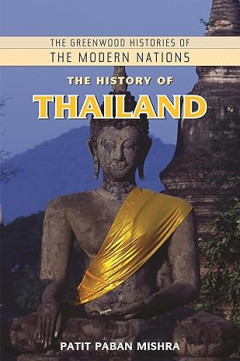
E-book The History of Thailand (The Greenwood Histories of the Modern Nations)
The book provides a clear portrayal of Thailand's culture and society, and explains its significance in the history of human civilization, its strategic geographic location, and its attraction as a tourist destination. Thailand is a fascinating country with a very rich culture and history. Today, it is home to over 60 million people, and is a newly industrialized nation with an emerging worl…
- Edisi
- -
- ISBN/ISSN
- 9780313340918
- Deskripsi Fisik
- 209 halaman
- Judul Seri
- -
- No. Panggil
- 959.3 MIS t

E-book From World War to Cold War: Churchill, Roosevelt, and the Internationa…
The 1940s was probably the most dramatic and decisive decade of the 20th century. This volume explores the Second World War and the origins of the Cold War from the vantage point of two of the great powers of that era, Britain and the USA, and of their wartime leaders, Churchill and Roosevelt. It also looks at their chequered relations with Stalin and at how the Grand Alliance crumbled into an …
- Edisi
- -
- ISBN/ISSN
- 9780199237616
- Deskripsi Fisik
- 374 halaman
- Judul Seri
- -
- No. Panggil
- 940.53 REY f
E-book The Creighton Century, 1907-2007
The first Creighton Lecture took place on 4 October 1907, almost seven years after the death of the scholar and bishop whom it honoured. Apart from being delivered by a lifelong friend, its published version stands in no discernible relation to Mandell Creighton himself, except for treating of his narrower patria, the Anglo-Scottish border. In fact the whole subsequent lect…
- Edisi
- -
- ISBN/ISSN
- 9781912702749
- Deskripsi Fisik
- 338 hlm
- Judul Seri
- -
- No. Panggil
- 907 BAT t

E-book Picturing Mind: Paradox, Indeterminacy And Consciousness in Art & Poetry
In this book the author takes an unusual multi-disciplinary approach to debates about contemporary art and poetry, ideas about the mind and its representations, and theories of knowledge and being. Arts practices are considered as enactments of mind and as transformative modes of consciousness. Ideas drawn from poetics, philosophy and consciousness studies are used to illuminate the conceptual …
- Edisi
- -
- ISBN/ISSN
- 9789042018099
- Deskripsi Fisik
- 369 halaman
- Judul Seri
- -
- No. Panggil
- 128.2 DAN p

E-book Flowers in the Wall: Truth and Reconciliation in Timor-Leste, Indonesi…
What is the experience of truth and reconciliation? What is the purpose of a truth commission? What lessons can be learned from established truth and reconciliation processes? Flowers in the Wall explores the experience of truth and reconciliation Southeast Asia and the Southwest Pacific, with and without a formal truth commission. Although much has been written about the operational phases of …
- Edisi
- -
- ISBN/ISSN
- 9781552389553
- Deskripsi Fisik
- 376 halaman
- Judul Seri
- -
- No. Panggil
- 323.4 WEB s
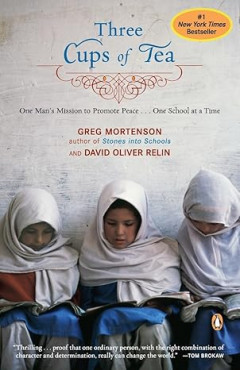
Three Cups of Tea: One Man's Mission to Promote Peace - One School at a Time
The astonishing, uplifting story of a real-life Indiana Jones and his humanitarian campaign to use education to combat terrorism in the Taliban’s backyard Anyone who despairs of the individual’s power to change lives has to read the story of Greg Mortenson, a homeless mountaineer who, following a 1993 climb of Pakistan’s treacherous K2, was inspired by a chance encounter with impoverishe…
- Edisi
- -
- ISBN/ISSN
- 9780143038252
- Deskripsi Fisik
- 249 halaman, 14 x 21 cm
- Judul Seri
- -
- No. Panggil
- 371.82 MOR t
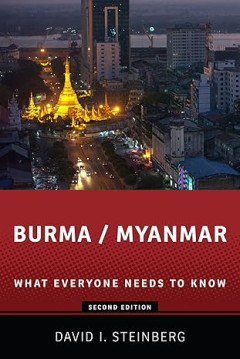
E-book Burma/Myanmar: What Everyone Needs to Know®
No country in Asia in recent years has undergone so massive a political shift in so short a time as Myanmar. Until recently, the former British colony had one of the most secretive, corrupt, and repressive regimes on the planet, a country where Nobel Peace Prize laureate Aung San Suu Kyi was held in continual house arrest and human rights were denied to nearly all. Yet events in Myanmar since t…
- Edisi
- -
- ISBN/ISSN
- 9780199981687
- Deskripsi Fisik
- 289 halaman
- Judul Seri
- -
- No. Panggil
- 959.1 STE b

Organic Chemistry, 5th Edition
John McMurry
- Edisi
- -
- ISBN/ISSN
- 0534373666
- Deskripsi Fisik
- 1500 halaman, 22.86 x 5.08 x 27.94 cm
- Judul Seri
- -
- No. Panggil
- 547 MCM o
The Twelve Days of Christmas
On the first day of Christmas day, my true love gave to me A partridge in a pear tree.
- Edisi
- -
- ISBN/ISSN
- 0760706298
- Deskripsi Fisik
- illust; 23.5 x 30 cm
- Judul Seri
- -
- No. Panggil
- 741.5 DEL t
Introduction to the Practice of Statistics
Statistics is interesting and useful because it provides strategies and tools for using data to gain insight into real problems. As the continuing revolution in computing automates most of the tiresome details, an emphasis on statistical concepts and on insight from data becomes both more practical for students and teachers and more important for users who must supply what is not automated. No …
- Edisi
- -
- ISBN/ISSN
- 0716735024
- Deskripsi Fisik
- xxviii + 825 hlm; 21.5 x 26 cm
- Judul Seri
- -
- No. Panggil
- 519.5 MOO i
Food Chemical Safety vol 2 : additives
The control of food additives has been much discussed in a newspapers and other parts of the media and yet, rather surprisingly, there have been few scientific books about additives. There have been detailed reports of the work of expert committees such as the Joint FAO/WHO Expert Committee on Food Additives and informative and commentaries on individual and legislative controls, notably those …
- Edisi
- -
- ISBN/ISSN
- -
- Deskripsi Fisik
- xi + 308 hlm; 14 x 21 cm
- Judul Seri
- -
- No. Panggil
- 664 WAT f
 Karya Umum
Karya Umum  Filsafat
Filsafat  Agama
Agama  Ilmu-ilmu Sosial
Ilmu-ilmu Sosial  Bahasa
Bahasa  Ilmu-ilmu Murni
Ilmu-ilmu Murni  Ilmu-ilmu Terapan
Ilmu-ilmu Terapan  Kesenian, Hiburan, dan Olahraga
Kesenian, Hiburan, dan Olahraga  Kesusastraan
Kesusastraan  Geografi dan Sejarah
Geografi dan Sejarah